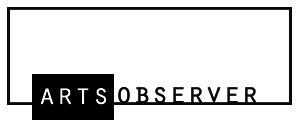NEW YORK—If you look closely, the silhouetted portraits are actually composed of thin computer tape strips with holes punched in them, creating the negative and positive space that essentially “draws” the works.
A photographer, mixed-media artist and crack programmer, Henry Chung reinvents old photographs found at flea markets and antique shops. Chung scans the “discarded” black-and-white portraits of people whose identity is unknown and manipulates the light and darks to optimize their outcome when fed into a program he wrote for an obsolete piece of computer equipment, converting each image into thin tape strips.

Henry Chung’s portraits are composed of antiquated computer tape strips.
On Sunday, Chung greeted visitors at his studio at Screwball Spaces in Red Hook and explained that he uses blue paint tape to hang his works because the torn pieces add a hand-made, human touch to what might otherwise appear to be a machine-executed piece.
On his website, Chung describes his work thus: “Ultimately, the series is about information access and my quest for a resolution that I could never find: people whose information I want but don’t have access to, rendered in a data format that can no longer be read.”
Chung is one of hundreds of artists working throughout the Brooklyn who participated in the Brooklyn Museum’s GO Brooklyn open studios event over the weekend (Sept. 8 and 9). The community-curated project that will determine the artists chosen for a group exhibit at the museum in December.
Visit Chung’s GO Brooklyn page here.
Explore work by a selection of other artists at Screwball Spaces participating in GO Brooklyn here.
All photos © Arts Observer

“Anonymous #59, #60, #61 and #62,” 2011 (computer punch tape.

Detail of “Anonymous #59, #60, #61 and #62.”

From left, “Anonymous #53,” “Anonymous #58” and “Anonymous #54” (all 2011, computer punch tape).
